The Feminine Ideal in Banyuls and Perpignan
with Ellen Turner Hall
Two exhibitions, two artists, two different views of the ideal woman.
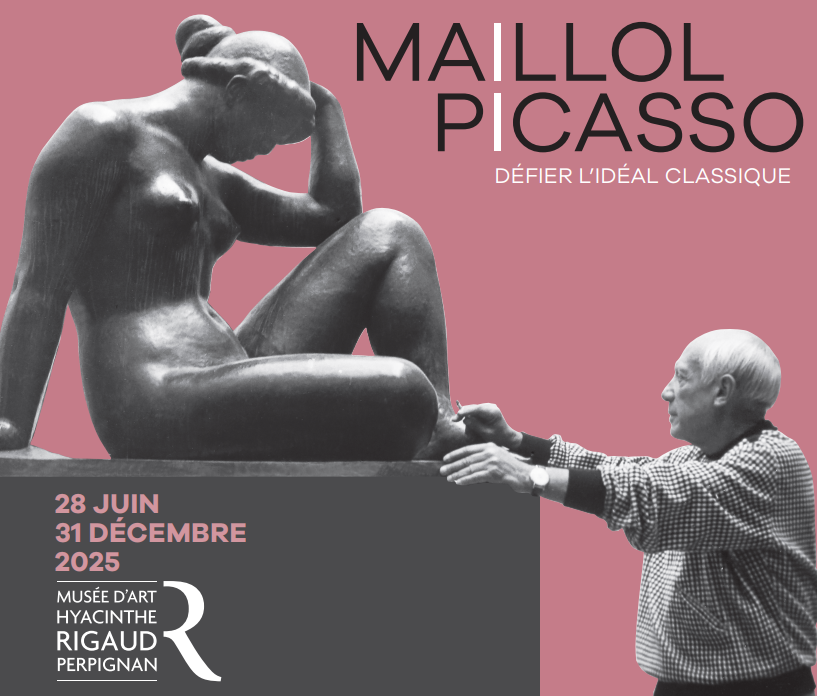
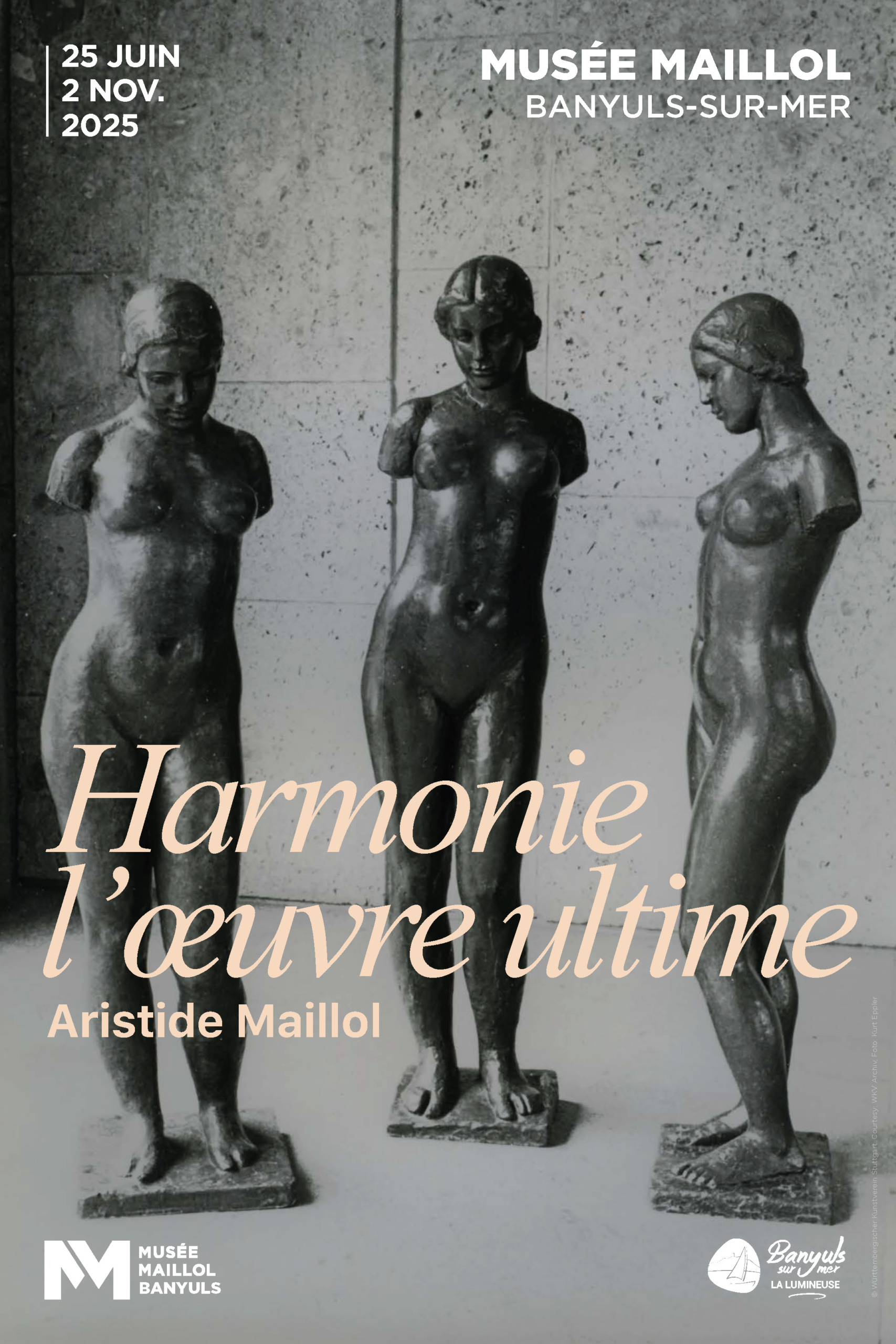
At the Maillol museum in Banyuls Maillol’s final unfinished sculpture L’Harmonie is the intriguing subject of the summer show.
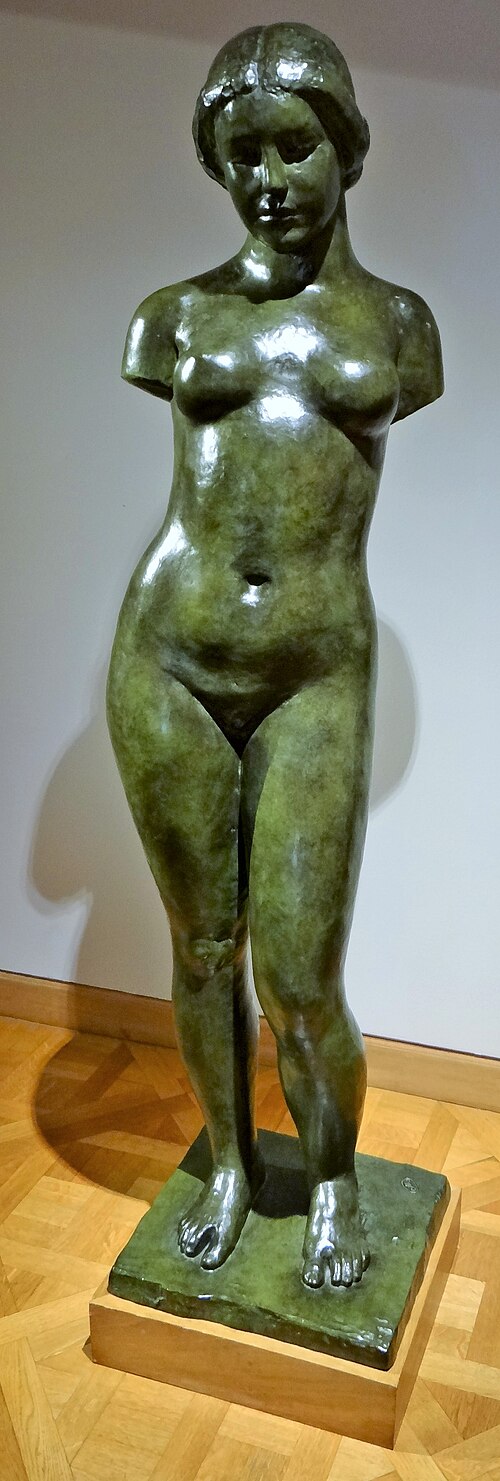 The unlikely couple of Maillol and Picasso share a double bill at the Rigaud museum in Perpignan.
The unlikely couple of Maillol and Picasso share a double bill at the Rigaud museum in Perpignan.
In Banyuls L’Harmonie is presented as the ultimate expression of Maillol’s fascination with the female body. Yet the title belies the tormented history of its creation, produced during the war, while his chosen model Dina Vierny was guiding refugees over the border into Spain. The Nazi occupiers imprisoned her not once but twice. Each time Maillol used his influence to have her released.
From the very first sketches, we see the sculptor aiming to understand the form from front, back and sides, thinking in three dimensions while drawing in two. We see these images transferred into clay and then bronze with minor adjustments while Maillol sought the perfect form: round, soft, peaceful. A timeless object of adoration. That sense of awe is captured in a photograph of the artist’s gnarled hands placed upon the smooth curves of the work in progress.
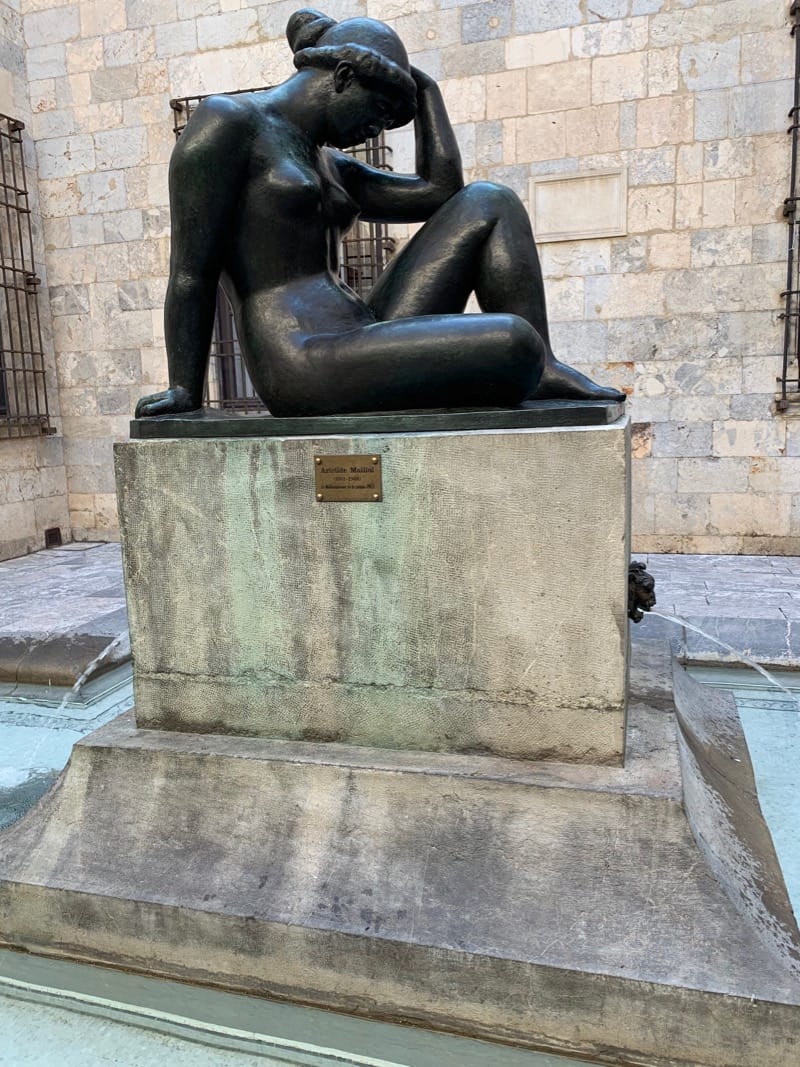
In Perpignan selected works of Maillol (1861-1944) and Picasso (1881-1973) are exhibited in tandem interpreting similar themes, while demonstrating their individual styles. Picasso’s large painting of two women in front of the sea (1956) emphasizes their bodies’ angularity and disproportion and contrasts with Maillol’s serene, meditative Mediterranean woman, sculpted in 1906. Maillol never ceased to search for an ideal form. Picasso was constantly hungry for change, never satisfied with simply repeating himself. His sketches demonstrate a masterly control of line, yet it was the what-if … ? that drove his creation ever forward.
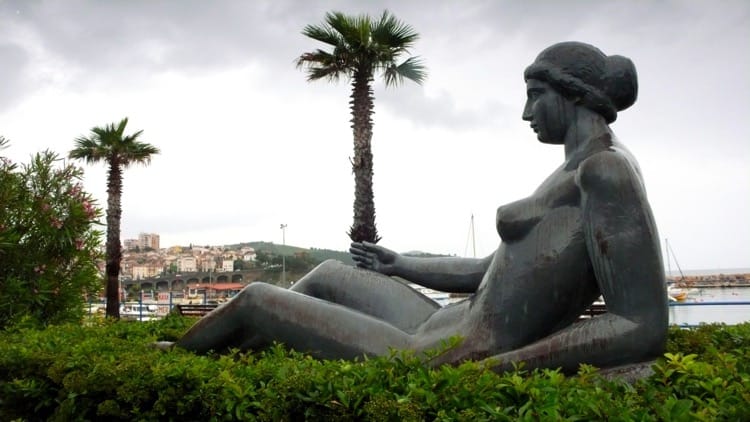
In Femme torero (1934) Picasso creates a tumultuous jumble of heads bodies and legs. As our eyes adjust to the distorted images, figures of a woman, horse and bull emerge from the complex combat in which they are trapped. Maillol’s Desire (1907), a bronze relief, illustrates a different but totally recognizable struggle, that between a man and a woman. But here too ambiguity reigns. Who is the seducer? Who is the seduced?
In 1938 near the end of his life Maillol sculpted L’Air, a woman improbably balanced on one hip, in apparent defiance of gravity, at risk of tumbling over at any moment. About the same time (1932) Picasso painted a reclining nude with ballooning limbs wrapped around her torso. Treating the same subject, Maillol attempts to defy chaos while Picasso embraces it.
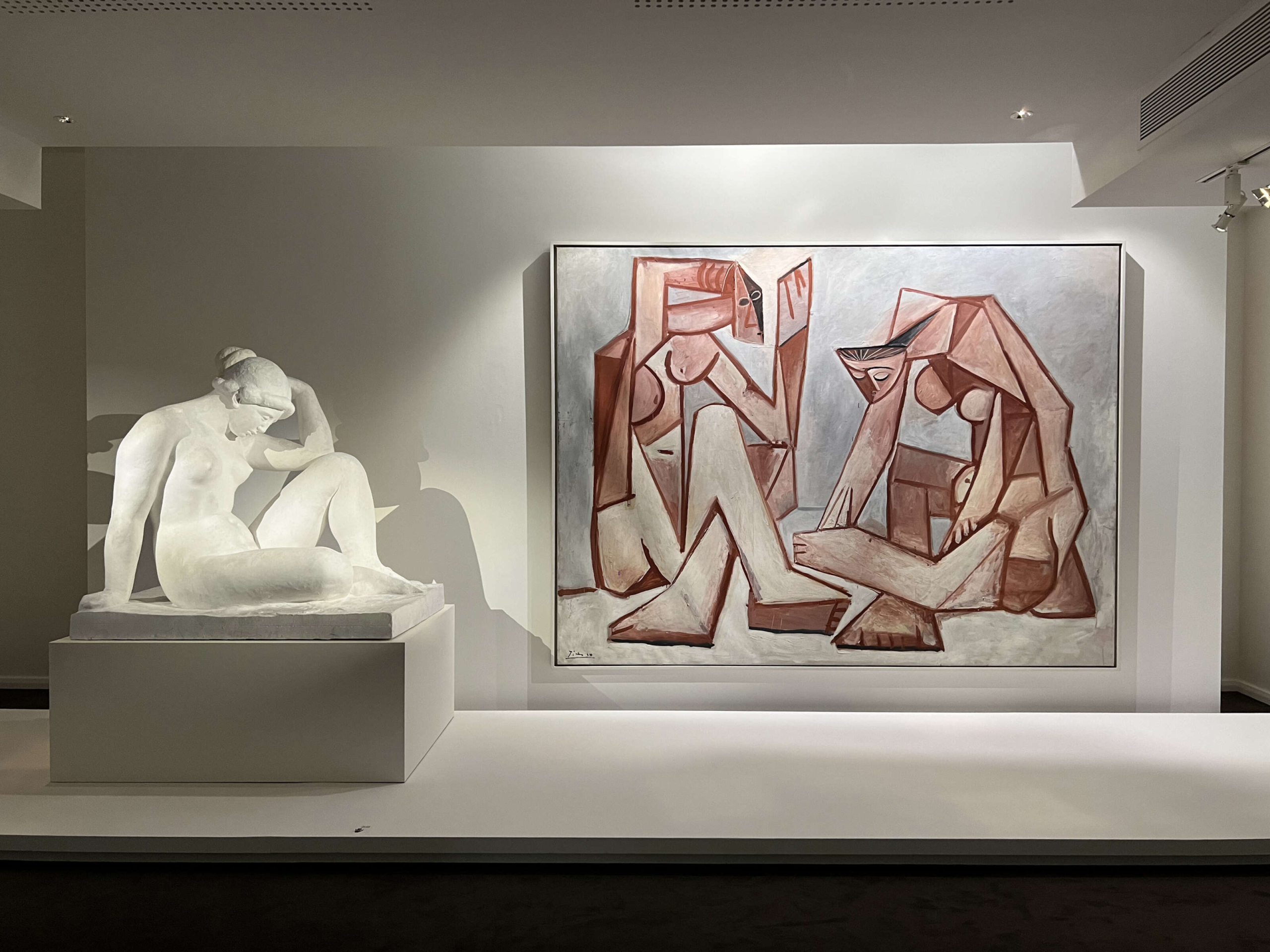
Maillol’s art was dedicated to sculpting the ideal female body, while what motivated Picasso was a much more abstract quest : to make art that challenges nature and the way we see.
BANYULS
Harmonie: l’ultime oeuvre runs from 25 June to 2 November 2025.
Open Tuesday to Sunday 10 -12 and 14 -18.
WEBSITE
museemaillolbanyuls@orange.fr
PERPIGNAN
Maillol/Picasso. Défier l’idéal Classique runs from 28 June to 31 December 2025.
Open every day 10h30 to 19h00 from June to 31 September.
WEBSITE
Friday 27th September 201
